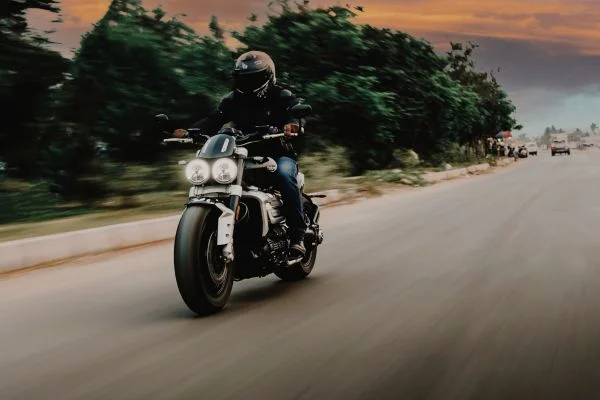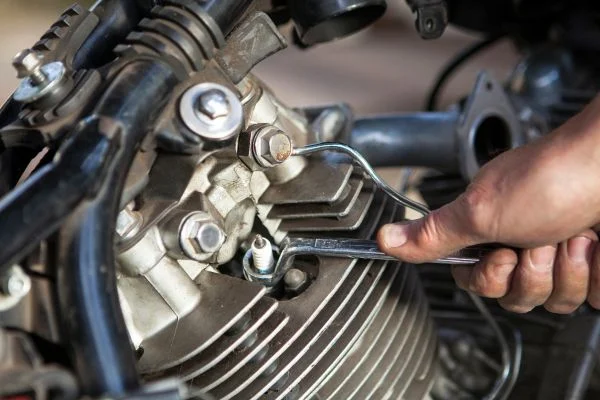Cracking the code on high mileage for motorcycles can be a game-changer for potential buyers and riders alike. In this guide, we’ll dive deep into motorcycle longevity and reveal the factors contributing to impressive mileage. Buckle up, and let’s get started!

Quick Navigation
What Is Considered High Mileage For Motorcycle?
Let’s kick things off by addressing the burning question: What is considered high mileage for a motorcycle? The truth is, it depends. Motorcycles are unique creatures, and their mileage can be influenced by a variety of factors such as maintenance, engine size, and how they’re ridden. However, a good ballpark figure for high mileage is around 50,000 miles. But don’t let that number scare you! Some well-maintained motorcycles can exceed 100,000 miles and still be in great shape.
What Is the Average Motorcycle Mileage in the US?
In the United States, the average annual mileage for motorcycles varies depending on factors like usage, riding conditions, and geography. However, a general estimate for the average motorcycle mileage in the US is around 3,000 to 5,000 miles per year. This number can be higher for riders who use their motorcycles as daily commuters or embark on long-distance tours, and lower for those who use their bikes primarily for leisurely weekend rides or occasional trips.
It’s important to note that these figures are just averages, and individual motorcycle riders may have significantly different annual mileages based on their personal habits and preferences.
How Many Miles Can a Motorcycle Last?
You might be wondering how many miles a motorcycle can last, and the answer is… it depends. That’s right, there’s no one-size-fits-all answer to this question. However, we can break it down into several factors that influence a motorcycle’s lifespan. These factors include:
Routine Maintenance
Routine maintenance plays a huge role in how long a motorcycle lasts. Just like cars, motorcycles need regular oil changes, tire rotations, and fluid checks. By staying on top of these tasks, you can help ensure your motorcycle runs smoothly for as long as possible.
Breaking-In Period
The breaking-in period is crucial for a new motorcycle. During the first 500 to 1,000 miles, it’s essential to take it easy on the throttle, shift gears smoothly, and avoid sudden stops. This helps the engine’s components settle in properly, which can contribute to a longer-lasting motorcycle.
Storage
How you store your motorcycle can also impact its longevity. Ideally, bikes should be stored in a dry, temperature-controlled environment to protect them from the elements. If you must store your motorcycle outdoors, invest in a high-quality cover to shield it from the sun, rain, and other harsh conditions.
Engine Size & Configuration
Engine size and configuration can also influence a motorcycle’s lifespan. Smaller engines tend to wear out faster, while larger engines tend to last longer. Additionally, some engine configurations (such as V-twins) are known for their durability, while others may not fare as well over time.
How Often Was It Ridden?
A motorcycle’s lifespan can be impacted by how often it was ridden. Bikes that are ridden frequently tend to have shorter lifespans, simply because they experience more wear and tear. On the other hand, motorcycles that are ridden sparingly can sometimes suffer from issues related to underuse, like stale fuel and deteriorated seals.
How Was It Ridden?

Lastly, the way a motorcycle is ridden can affect its longevity. Aggressive riding, like frequent hard accelerations and sudden stops, can put extra strain on the bike and cause components to wear out quickly. Conversely, riding smoothly and responsibly can help prolong a motorcycle’s life. Remember, it’s not just about the miles on the odometer; it’s also about how those miles were accumulated.
How Does Mileage Affect Motorcycle Value?
Now that we’ve covered some factors that influence a motorcycle’s lifespan let’s discuss how mileage affects its value. Generally, a bike with higher mileage will have a lower resale value than a comparable bike with lower mileage. This is because potential buyers may be concerned about wear and tear, as well as the possibility of expensive repairs down the line. However, it’s important to remember that mileage isn’t the only factor that affects a motorcycle’s value. Factors such as maintenance history, overall condition, and aftermarket modifications can also play a role in determining a bike’s worth.
That said, don’t be too quick to dismiss a high-mileage motorcycle. A well-maintained bike with high mileage can still be a fantastic purchase, especially if it’s been ridden responsibly and has a detailed maintenance record to back it up.
Expert Advice for Selling Your High-Mileage Motorcycle
When it comes to selling your high-mileage motorcycle, the first step is preparing your bike for sale. This means giving it a thorough cleaning, addressing any minor issues, and ensuring that it’s in the best possible condition. Be sure to collect and organize all maintenance records, as these can be a valuable asset in showcasing the care and attention you’ve given to your motorcycle over time.

Additionally, consider having a pre-sale inspection performed by a qualified mechanic to identify any potential problems that may need to be addressed before selling. By taking these steps, you can present your bike in the most appealing way to potential buyers and potentially command a higher sale price.
Next, focus on effectively marketing your motorcycle. Start by taking high-quality, well-lit photos that showcase your bike’s best features and accurately represent its condition. When crafting your advertisement, be honest and detailed about the motorcycle’s history, maintenance, and any modifications or upgrades.
Be sure to highlight the positives, like diligent maintenance and the installation of quality aftermarket parts. Utilize various online platforms, such as social media, motorcycle forums, and classified websites, to reach a wide audience of potential buyers. When negotiating with interested parties, be prepared to answer questions about your motorcycle’s mileage and maintenance history, and be willing to discuss a fair price based on the bike’s condition and the current market.
By following these expert tips, you can successfully sell your high-mileage motorcycle and ensure a positive experience for both you and the buyer.
Final Thoughts
In conclusion, determining what’s considered high mileage for a motorcycle depends on a variety of factors, including maintenance, engine size, and riding habits. While 50,000 miles might be a rough benchmark, it’s crucial to remember that a well-maintained, responsibly ridden motorcycle can exceed 100,000 miles and still be in excellent condition.
When considering a motorcycle’s value, don’t just focus on the mileage. Look at the overall condition, maintenance history, and other factors that could influence its longevity. Ultimately, a high-mileage motorcycle that has been well-cared for can still provide many more miles of enjoyable riding.
So, whether you’re in the market for a new motorcycle or you’re just curious about how long your current bike might last, keep these factors in mind. With proper care and attention, your motorbike can provide you with countless miles of excitement and adventure. Happy riding!
FAQs
How many miles can a motorcycle last?
A well-maintained motorcycle can last between 50,000 to 100,000 miles, depending on factors like maintenance, engine size, and riding habits.
What is the average mileage of a motorcycle?
The average annual mileage for motorcycles varies, but generally falls between 3,000 to 5,000 miles, with differences based on usage, riding conditions, and geography.
What is the life expectancy of a bike?
The life expectancy of a bike varies greatly based on factors such as the type of bike, its build quality, maintenance, and riding conditions. A well-maintained bike can last anywhere from 5 to 20 years or more. Regular maintenance, proper storage, and responsible riding habits contribute to prolonging a bike’s lifespan.
- 5 Best Motorcycle Bluetooth Helmets - September 12, 2023
- Are Honda Dirt Bikes Reliable & Good? (Helpful Tips!) - June 5, 2023
- Yamaha TTR230 Vs Kawasaki KLX230 (Which Is Better!) - May 29, 2023
